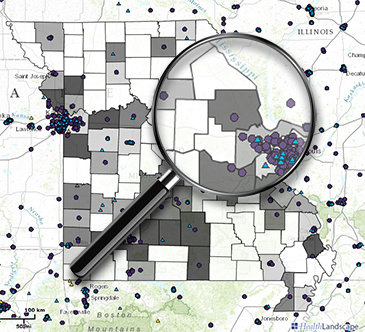The United States has more than 6,000 designated health professional shortage areas in primary care alone. A new mapping tool from the AMA lets you find out which regions are most in need of physicians in your specialty and would be served best if you establish or expand your practice there.
With the AMA Health Workforce Mapper (log in), an interactive tool released Tuesday, you and your staff can determine locations to establish or expand your practice based on regional needs for access to care, geographic features and the existing health care workforce.
The tool helps AMA members make wise practice decisions and meet pressing patient access needs by giving a map view of layered geographic information, health data, and practice locations of physicians and other health care providers—down to medical specialty and practice type.
For instance, an OB-GYN group practice located in St. Louis that is interested in expanding to another practice site in the state could select Missouri as the location, choose OB-GYN as the class of physicians they want to see on the map, and overlay that with nurse midwives and other health care professionals in the field.
The resulting map would demonstrate where physicians and other providers involved in women’s health care are located and show the areas of greatest need with the ratio of patients to health care professionals. The practice then could choose to see where other group practices, hospitals and medical schools are in relation to the areas they’re considering for a new practice site. Physicians who are not AMA members have access to a reduced view of the tool that does not include physician data.
Physicians in training and those already in practice can use this tool to:
- Identify and prioritize underserved areas for practice expansion or establishment
- Create and display ratios of physicians to population in any given region
- Map the practice locations of physicians and other clinicians in specific states or regions
- Select and compare across multiple categories of physician specialty types
- Identify shortage areas, hospital locations, population indicators and relevant health policy data
- View geographic features, including highways, mountain ranges and waterways
Exclusive access: While a reduced view of this tool is open to anyone who wishes to view basic regional information and detailed non-physician provider data, AMA members get exclusive access to layered physician data that drills down to medical specialty and practice type and overlays the other mapping data for a complete picture of the selected location.
If you’re not an AMA member, join today.
Want to learn more? Register today to participate in a live demonstration at 1 p.m. Eastern time Nov. 14.




